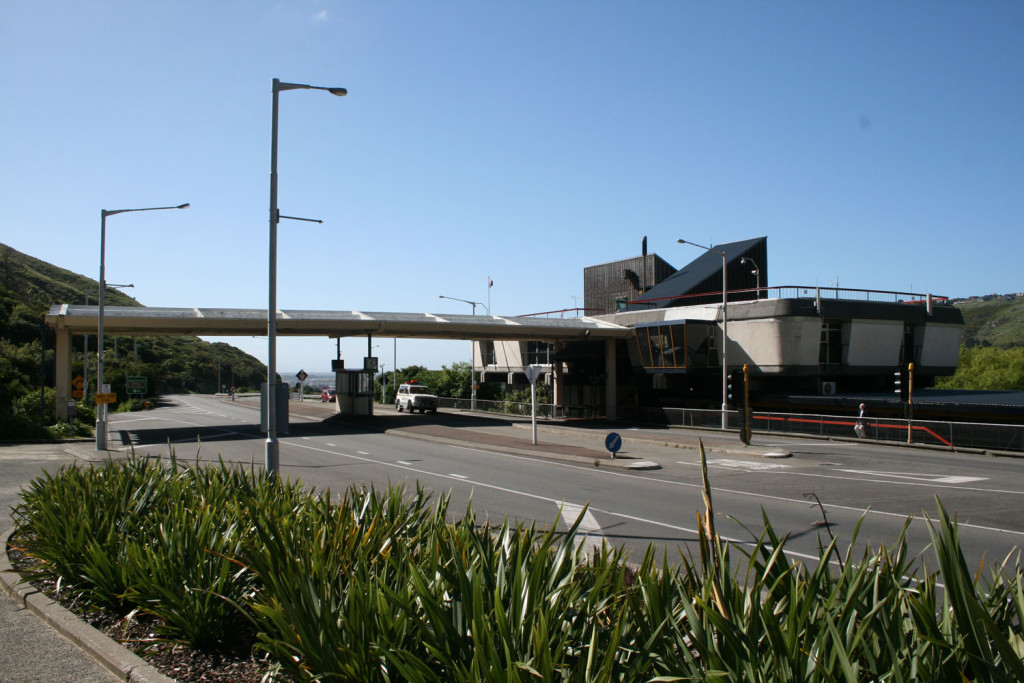
Lyttleton tunnel Building from north c1964
Favourite buildings can be significant presences in our lives, but in a place like Christchurch they can also be on-going absences, something that you feel to be missing from your experience of the world as you go about your daily activities. Peter Beaven’s Lyttelton Tunnel Building (1962-64, demolished 2013) is one of many such absences among the Modern Movement buildings of Christchurch. Whether you were driving towards Lyttelton or returning to Christchurch from the port, the Tunnel Building was always an event on the journey, a brilliant piece of sculptural design that was evocative of the port that had been left behind or an anticipation of what was to come.
It was, famously “the fifth ship,” a provocative gesture towards the pretentions of the descendants of Canterbury’s first settlers, but also a reminder of the province’s colonial past. Beaven defied the Modern Movement’s rejection of history by proudly embracing the province’s traditions yet without having to resort to obvious formal references. This was, triumphantly, a modern building in its forms, its materials and its structural elements. A dramatic stairway bisected the building on the axis of the toll plaza and aligned with a peak on the Port Hills beyond. The tunnel control room, projecting towards the roadway, gave clear views to the tunnel mouth and down the access road.

Tunnel Building from south
With the dissolution of the Tunnel Authority, the administrative section lost its function and its Beaven-designed furniture was dispersed, although the unique light fittings of the stair remained to the end.

Tunnel Building Stair
When the February 2011 earthquake struck Christchurch, the Tunnel Building was close to the epicentre, but the June 2011 aftershock was closer still. Damage to its structure was inevitable. Yet if the building’s importance as a major landmark in the history of New Zealand architecture had been given any weight, it would surely have been saved and restored. But, as was the case for too many buildings in Canterbury, the earthquakes provided a pretext for diffident owners to demolish rather than preserve one of our most important cultural and historical assets.
Ian Lochhead, architectural historian
The “My favourite modernist building …” series is in support of Gordon Wilson Flats which is facing threat of demolition.

Leave a Reply